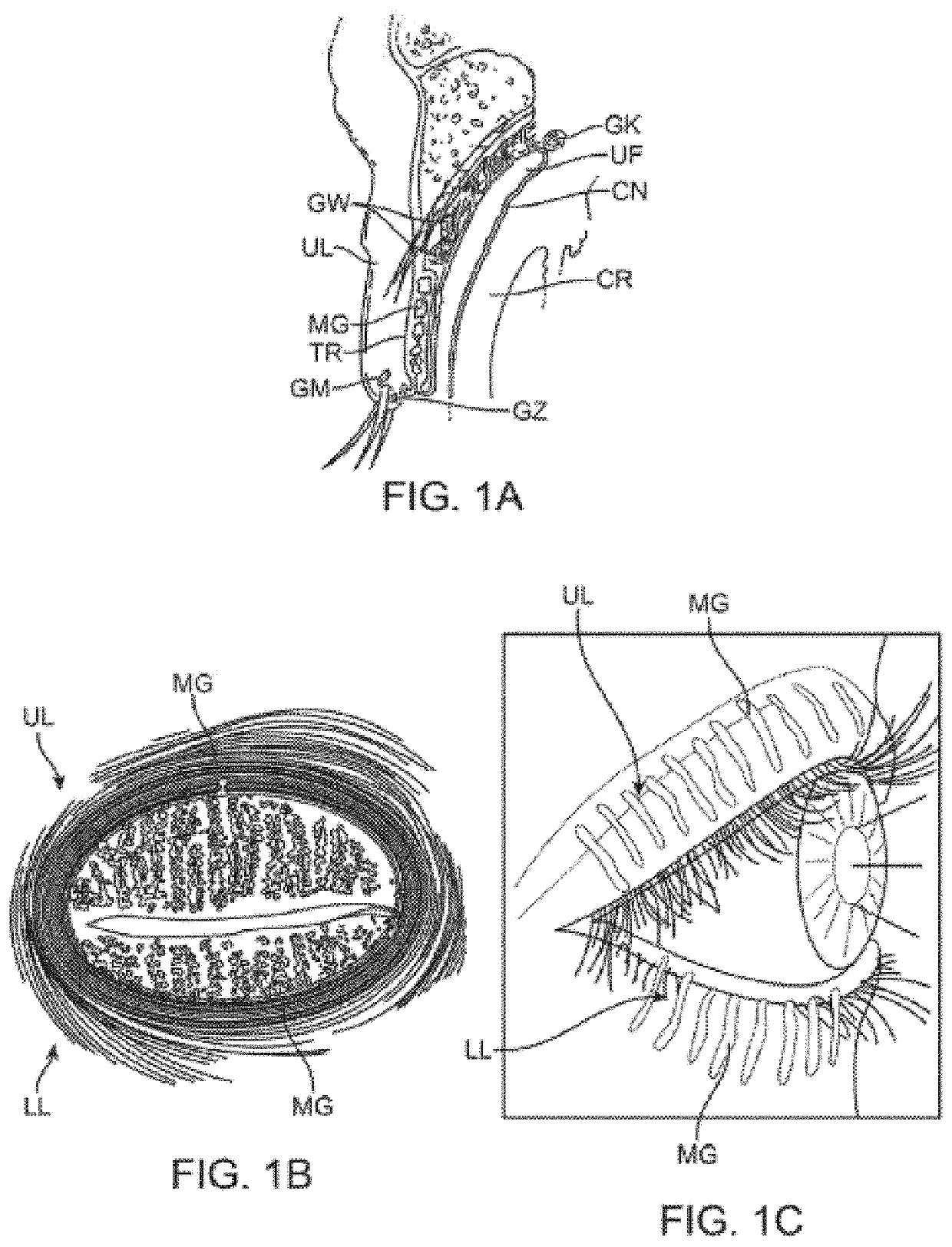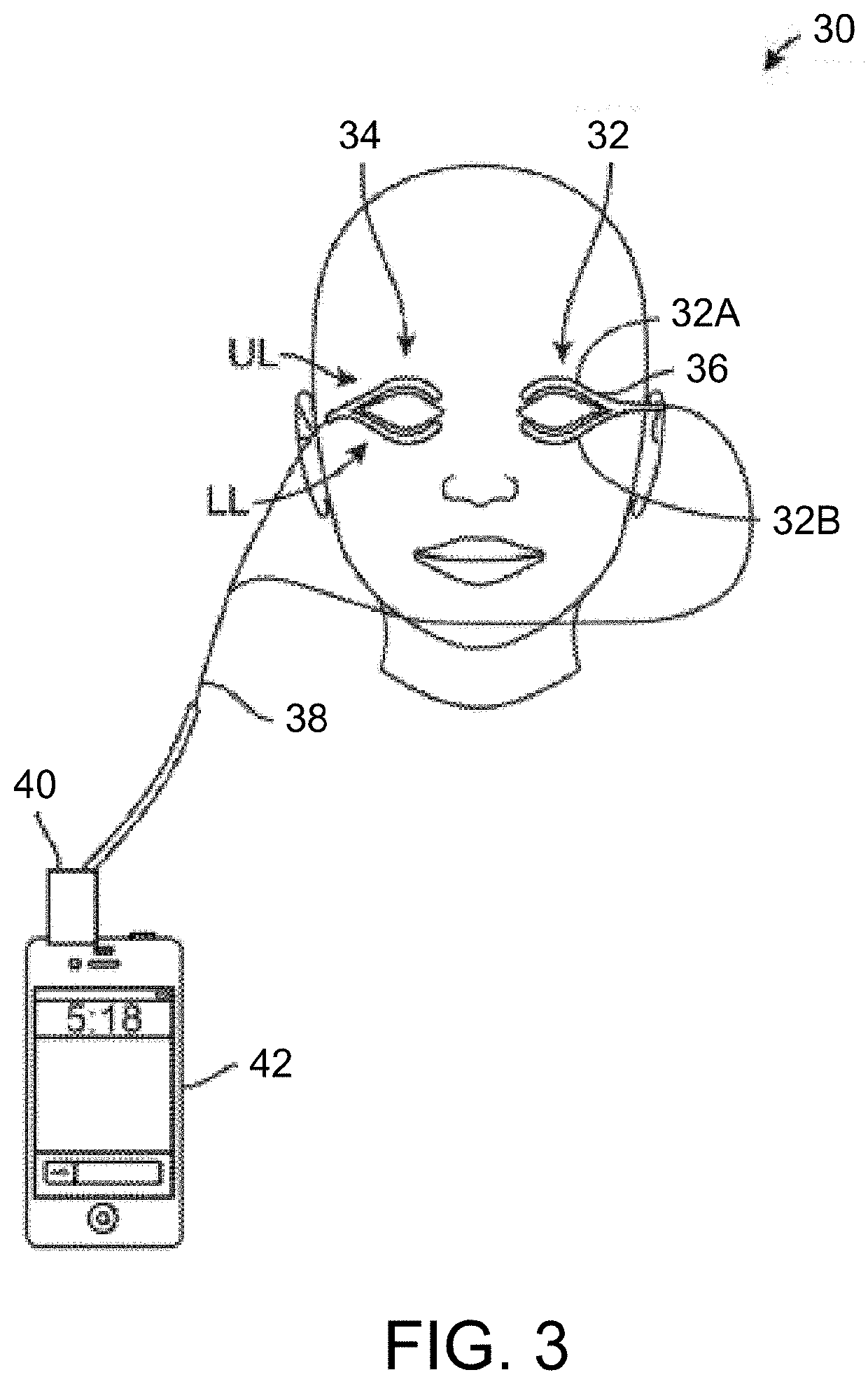Treatment apparatus and methods
a technology for treating dry eye syndrome and treating the eye, applied in the direction of therapeutic heating, contraceptive devices, therapeutic cooling, etc., can solve the problems of dry eye symptoms, excessive watery layer, eye irritation, etc., to prevent or inhibit the patient from blinking, facilitate conductive heat transfer, and reduce eyelid forces
- Summary
- Abstract
- Description
- Claims
- Application Information
AI Technical Summary
Benefits of technology
Problems solved by technology
Method used
Image
Examples
Embodiment Construction
[0051]In treating conditions such as meibomian gland dysfunction (MGD), which is commonly associated with the evaporative form of dry eye syndrome (DES), the meibomian glands may be mechanically pressed or squeezed to express solidified meibum from the glands in order to help treat MGD. Forceps are typically used to apply pressure upon the meibomian glands. The forceps may be modified to create a pressure gradient upon the meibomian glands to direct meibum and any other meibomian gland secretions towards the meibomian gland orifices. The forceps may be configured to further provide for debridement of the tissue along the upper and / or lower lids to facilitate the clearing of any obstructions such as inspissated oil and meibum plugs from the main ducts and orifice openings of the meibomian glands, meibomian gland channel, and meibomian gland orifices. Additionally and / or alternatively, the forceps may be configured to also provide a thermal treatment, e.g., to the eyelid surfaces to s...
PUM
 Login to View More
Login to View More Abstract
Description
Claims
Application Information
 Login to View More
Login to View More - R&D
- Intellectual Property
- Life Sciences
- Materials
- Tech Scout
- Unparalleled Data Quality
- Higher Quality Content
- 60% Fewer Hallucinations
Browse by: Latest US Patents, China's latest patents, Technical Efficacy Thesaurus, Application Domain, Technology Topic, Popular Technical Reports.
© 2025 PatSnap. All rights reserved.Legal|Privacy policy|Modern Slavery Act Transparency Statement|Sitemap|About US| Contact US: help@patsnap.com



